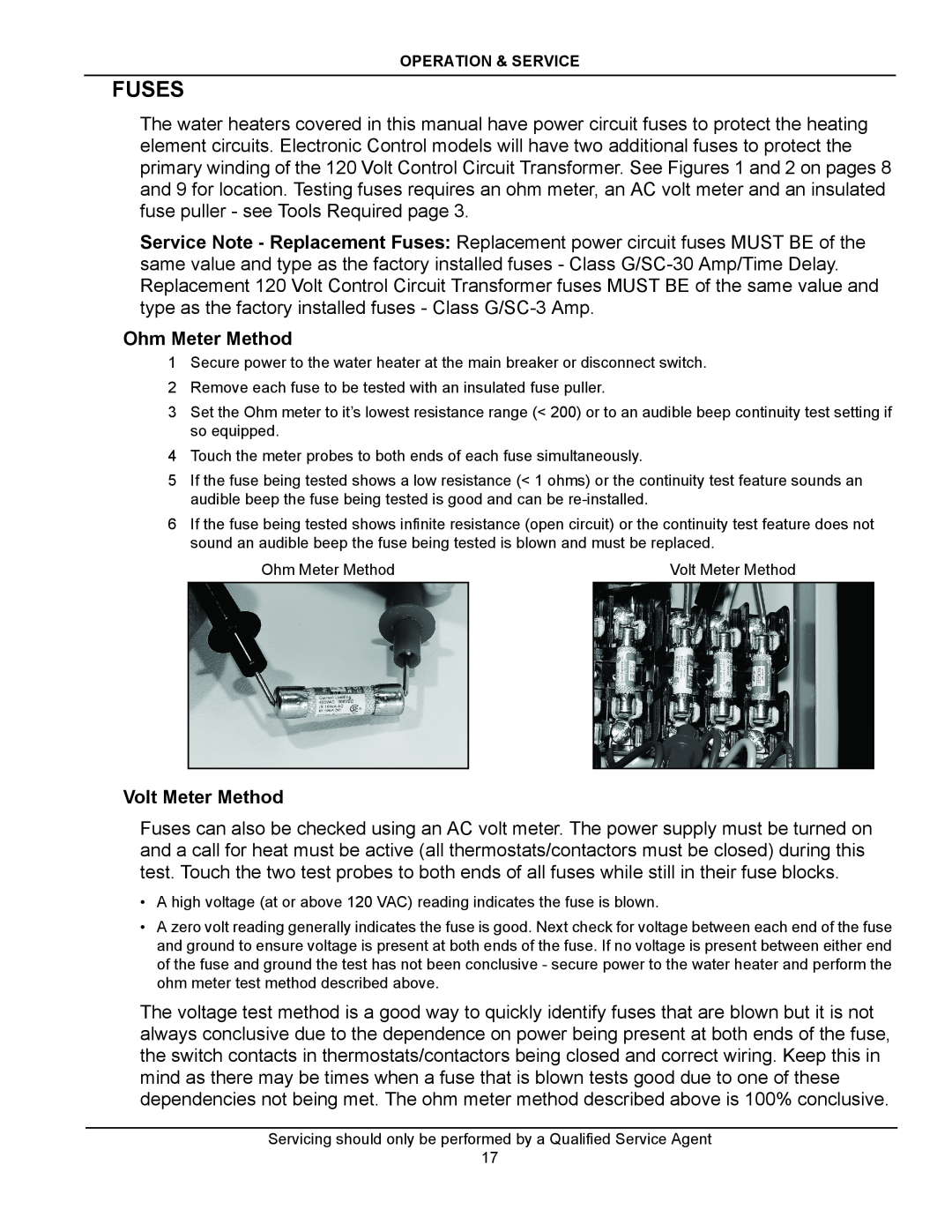
OPERATION & SERVICE
FUSES
The water heaters covered in this manual have power circuit fuses to protect the heating element circuits. Electronic Control models will have two additional fuses to protect the primary winding of the 120 Volt Control Circuit Transformer. See Figures 1 and 2 on pages 8 and 9 for location. Testing fuses requires an ohm meter, an AC volt meter and an insulated fuse puller - see Tools Required page 3.
Service Note - Replacement Fuses: Replacement power circuit fuses MUST BE of the same value and type as the factory installed fuses - Class
Ohm Meter Method
1Secure power to the water heater at the main breaker or disconnect switch.
2Remove each fuse to be tested with an insulated fuse puller.
3Set the Ohm meter to it’s lowest resistance range (< 200) or to an audible beep continuity test setting if so equipped.
4Touch the meter probes to both ends of each fuse simultaneously.
5If the fuse being tested shows a low resistance (< 1 ohms) or the continuity test feature sounds an audible beep the fuse being tested is good and can be
6If the fuse being tested shows infinite resistance (open circuit) or the continuity test feature does not sound an audible beep the fuse being tested is blown and must be replaced.
Ohm Meter Method | Volt Meter Method | |
|
|
|
Volt Meter Method
Fuses can also be checked using an AC volt meter. The power supply must be turned on and a call for heat must be active (all thermostats/contactors must be closed) during this test. Touch the two test probes to both ends of all fuses while still in their fuse blocks.
•A high voltage (at or above 120 VAC) reading indicates the fuse is blown.
•A zero volt reading generally indicates the fuse is good. Next check for voltage between each end of the fuse and ground to ensure voltage is present at both ends of the fuse. If no voltage is present between either end of the fuse and ground the test has not been conclusive - secure power to the water heater and perform the ohm meter test method described above.
The voltage test method is a good way to quickly identify fuses that are blown but it is not always conclusive due to the dependence on power being present at both ends of the fuse, the switch contacts in thermostats/contactors being closed and correct wiring. Keep this in mind as there may be times when a fuse that is blown tests good due to one of these dependencies not being met. The ohm meter method described above is 100% conclusive.
Servicing should only be performed by a Qualified Service Agent
17
